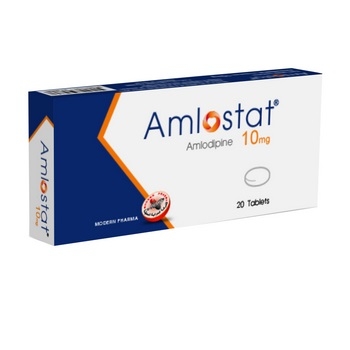Amlostatin 10
Pharmacodynamic properties
- Amlodipine belongs to a group called calcium channal blockers, with mainly
vascular effects.
- Amlodipine is a calcium ion influx inhibitor of the dihydropyridine group (slow
channel blocker or calcium ion antagonist) and inhibits the transmembrane influx of
calcium ions into cardiac and vascular smooth muscle.
- The mechanism of the antihypertensive action of amlodipine is due to a direct
relaxant effect on vascular smooth muscle.
- Amlodipine dilates peripheral arterioles and thus, reduces the total peripheral
resistance (afterload) against which the heart works. Since the heart rate remains
stable, this unloading of the heart reduces myocardial energy consumption and
oxygen requirements.
- The mechanism of action of amlodipine also probably involves dilatation of the main
coronary arteries and coronary arterioles, both in normal and ischaemic regions. This
dilatation increases myocardial oxygen delivery in patients with coronary artery
spasm (Prinzmetal's or variant angina).
- Amlodipine has not been associated with any adverse metabolic effects or changes in
plasma lipids and is suitable for use in patients with asthma, diabetes, and gout.
Pharmacokinetic properties
Absorption
- After oral administration of therapeutic doses, amlodipine is completely absorbed.
Absolute bioavailability has been estimated to be between 64 and 80%. Peak serum
concentration occurs late approximately 6 to 12 hours after dosing. The
bioavailability of amlodipine is not affected by food intake.
Distribution
- The volume of distribution is approximately 21 l/kg. In vitro studies have shown that
approximately 97.5% of circulating amlodipine is bound to plasma proteins.
Elimination
- Amlodipine is extensively metabolised by the liver to inactive metabolites with 10%
of the parent compound and 60% of metabolites excreted in the urine.The terminal
plasma elimination half life is about 35 to 50 hours and is consistent with once daily
dosing.


